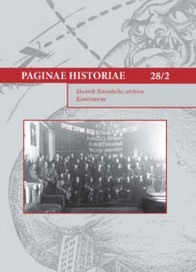KOMINTERNA A STREDNÁ EURÓPA 1919–1922. OD INTEGRÁCIE K DISCIPLINÁCII A RACIONALIZÁCII
THE COMINTERN AND THE CENTRAL EUROPE 1919–1922. FROM THE INTEGRATION TO DISCIPLINATION AND RATIONALISATION
Author(s): Juraj BenkoSubject(s): Political history, Government/Political systems, Political behavior, Pre-WW I & WW I (1900 -1919), Interwar Period (1920 - 1939), History of Communism
Published by: Národní archiv
Keywords: The Comintern; Central Europe; 1919–1922;
Summary/Abstract: The paper focuses on the ideological development of the Communist International and to organisational trends in its functioning in the first years of existence. It considers especially three processes that were applied during the formation period of this international organisation of the national communist parties. In the beginning, it was the process of organisational and ideological integration that aimed to unifying leftish, revolution-oriented parties. Very early, a year after its foundation, the phase of the ideological disciplination stepped in. Eventually, also in connection with the decline of the revolutionary wave in Europe, the organisational rationalization was enforced within the Comintern. As a result of all these changes, the influence of the Moscow headquarters over the lower movement elements was increased since the beginning of the 1920s and later also over the national communist parties affiliated to the Comintern. In this context the paper sketches out the development in the Central Europe – the foundation of the Comintern, the development of its competencies as well as the development of the central apparatus for the relations with communist parties in the Central Europe, including the Communist Party of Czechoslovakia.
Journal: Paginae Historiae
- Issue Year: 28/2020
- Issue No: 2
- Page Range: 51-67
- Page Count: 17
- Language: Slovak

